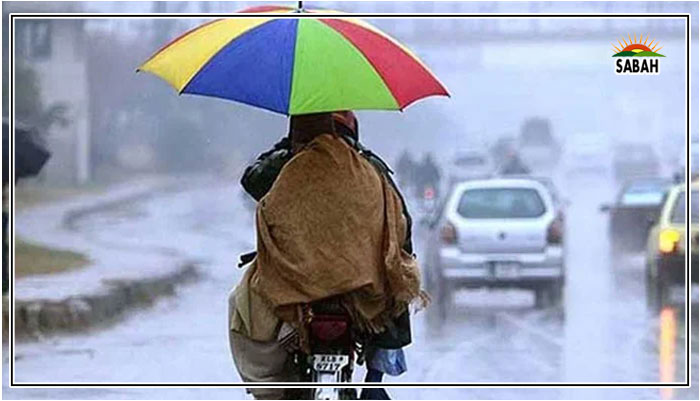A dying lake….. Naseer Memon
ONCE glorified as Pakistan’s largest freshwater lake and a pristine wetland ecosystem, Manchar Lake has degenerated into a polluted pond. In fact, Manchar is a case study in how nature’s endowment can be annihilated by poor planning; in this case, by the ill-conceived Right Bank Outfall Drain (RBOD) project.
Historically a natural depression fed by hill torrents of the Kirthar range on its western boundary, the pond was converted into a lake under the Sukkur barrage project in 1932. The lake was provided with a 32-kilometre long Manchar Containing (MC) Bund and was connected with the Indus through three feeder canals. Additionally, an abandoned stream of the Indus, Main Nara Valley, was also converted into a proper channel — the Main Nara Valley Drain (MNVD) — to transport torrential flows from the northern edge of Kirthar. A 277km long flood protection (FP) bund was also constructed to divert mountain flows from Balochistan and the Kirthar range to Manchar.
Nai Gaj is the main source of torrential inflows from the mountains. Additionally, a series of other torrents bring fleeting, yet high-intensity, gushing flows that require completely different management systems, institutional capacities and infrastructure. High floods of 1934, 1942, 1944, 1948, 1956, 1973, 1975, 1976, 1995, 2007 and 2022 are reminders of this fact. Last year, breaches in the MNVD and, later on, relief cuts applied at Aral Wah flooded the area between Sehwan and Bhan Saeedabad.
Manchar Lake is a major source of livelihood for local communities and used to support local agriculture before its water became toxic. After the recession of flood water, the exposed lake floor would become suitable for wheat cultivation on the residual moisture, akin to a riverine floodplain. The Lower Indus Region Right Bank Master Plan (Mott MacDonald International Ltd, 1992) estimated an availability of 26,000 acres of land when the water level came down from 110ft to 106ft. Additionally, agriculture was practised through three connecting canals. The aforementioned report estimated that more than 82,000 acres were being cultivated in the areas around the lake at that time. Fish, migratory birds and aquatic plants were some of the other sources of food and livelihood for local communities. The RBMP projected an annual fish production of 2,000 tonnes. Most these sources of livelihood have now vanished due to the pollution-ravaged ecosystem of the lake, compelling many of the local people to migrate.
The disaster began to unfold in 1976 when Wapda converted MNVD from a fresh water stream to a saline water drain pouring agricultural effluent into Manchar Lake.
The disaster began to unfold several decades ago, when the Water and Power Development Authority in 1976 converted the MNVD from a fresh water stream to a saline water drain pouring agricultural effluent of northern Sindh districts into Manchar Lake. Building on the Lower Indus report, a Right Bank Master Plan (RBMP) was developed in 1992 with a focus on irrigation and drainage requirements on the right bank. Pursuing recommendations of the Plan, Wapda started review of the RBOD (Stage-1) project. A report of the RBMP about the Manchar and Hamal lakes mentioned that pouring the effluent of Stage-1 into Manchar was technically possible. However, the document makes clear that the prognosis for Manchar in that case would be deleterious, saying: “It would result in a significant deterioration in lake water quality”. The Indus Link was proposed as a solution to divert MNVD to the Indus River. The experts, however, underestimated the fallout of this measure on the Indus River, saying it “would have no negative impact”.
Under the RBOD Stage-1 feasibility and as envisaged under the RBMP, the RBOD Stages 3 and 4 were advised to be constructed after assessing the impact of Stages 1 and 2, but Wapda implemented all four stages simultaneously on the direction of the then prime minister without evaluating the impacts of Stages 1 and 2. This eventually reduced Manchar lake to a toxic pond, compelling the Sindh government to embark upon a new RBOD-II drain, connecting MNVD/RBOD with the Arabian Sea at Gharo Creek through a 273km long drain to carry 3,525 cusecs of saline effluent. This became inevitable to save the Indus River as well as Manchar Lake from complete environmental devastation. RBOD-II was approved at a cost of Rs14 billion and launched on Nov 20, 2001. But due to a delay in the release of funds, progress remained sluggish. Subsequently, its capacity was increased from 2,271 cusecs to 3,525 cusecs and the cost escalated to Rs29.3bn. The floods of 2010 required repair work and additional flood protection for the project. With the project’s increased scope, the cost estimate escalated to Rs62bn in 2017.
In 2011, the Supreme Court took suo moto notice of the contamination of water in Manchar Lake. Protracted court proceedings could not conclude with any clear instructions regarding the complete rehabilitation of the lake. Meanwhile, the court directed the provincial authorities to ensure regular monitoring and revival of water filtration plants, disposal of solid waste and efforts to control pollution level in the lake. The judges observed that the problem of contamination in Manchar Lake will only be resolved when the RBOD project is completed and the contaminated water disposed of in the sea. In 2017, a research study titled Environmental Assessment of Manchar Lake conducted by the US-Pakistan Centre for Advanced Studies in Water, Jamshoro, found all pollutants within it exceeding the permissible threshold.
So far, Rs35bn to 40bn have been spent on the project. Encountering several bottlenecks and lack of political will, physical work on the project has been at a standstill for the last five years. It has seen non-compliance with timelines several times as well as multiple cost revisions. Both the federal and provincial governments have abandoned this vital project and whole effluent continues to devastate Manchar Lake. Such indifference indicates apathy on the part of both authorities. Manchar Lake is a wetland of national significance and should be rehabilitated by completing the RBOD project on a priority footing.
The writer is a civil society professional.
nmemon2004@yahoo.com
Courtesy Dawn, August 26th, 2023












